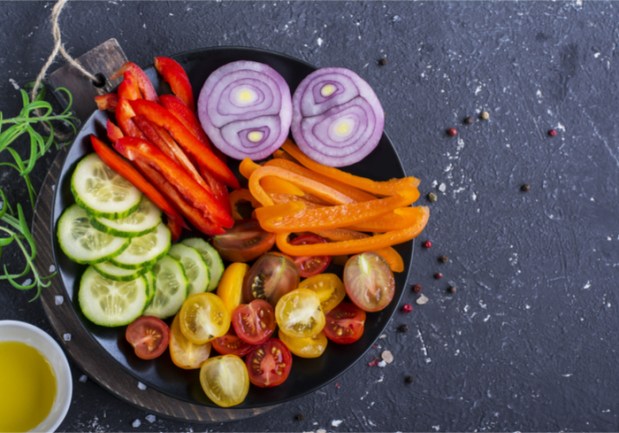Robots Serve Up Fresh Fare As Automated Chefs

Robots are becoming automated chefs by preparing everything from pizza to salads, but they are not limited to quick-service restaurants (QSRs), serving burgers and pizzas. They’ve graduated from fast food to healthy food, and devices such as Chowbotics’ Sally the Salad Robot are moving into venues beyond places where consumers traditionally find freshly prepared meals.
“She provides food in places where you don’t normally have food service,” said Chowbotics Founder and CEO Deepak Sekar in an interview with PYMNTS.com.
Sally, for example, works in markets such as C-stores, which may only offer foods like hot dogs and pizza. She’s also taken up residence in offices, where employers might provide lunch but not dinner — providing the chance for workers to have a healthy evening meal. In addition, Sally can work for hotels as some properties are doing away with room service. The device also avoids some of the hygienic pitfalls of a conventional salad bar, where consumers might use the same spoons all day long. That advantage could be useful for environments such as hospitals.
Though these new and unfamiliar machines may intrigue customers, not all customers know how to interact with Sally. As a result, for instance, Sally comes with poster wraps around the machines to give consumers instructions on how to use the device. Once customers start using food robots like Sally, companies such as Chowbotics integrate loyalty programs to encourage customers to return and place more orders. To that end, consumers can enter their email addresses to receive coupons on the device’s screen for the future.
In terms of payments, outlets can opt to have Sally make and dispense the salad, and have consumers pay at a cash register. Alternatively, Sally can come equipped with a credit card reader. And this set-up may only become more popular: The projected annual growth of the American interactive kiosk market through 2021 is 7.2 percent. The total annual revenue generated by self-service kiosks has already topped $218 million in 2016, according to the PYMNTS Unattended Retail Tracker.
The Automated Chef
Sally the Salad Robot promises to create custom salads with up to 21 seasonal ingredients, which are replenished daily, in less than a minute. To receive their own robot-made salad, customers place a bowl beneath the dispenser, make selections on a touchscreen interface and watch as Sally’s canisters drop each salad ingredient in to the bowl. Sally can serve up meals such as the Sally Salad — romaine, cherry tomatoes, and carrots — or the Power Chow with kale, red cabbage, and walnuts.
Beyond Sally, robots have gone to work to make other foods. California-based startup Miso Robotics, for example, has Flippy, the automated fast-food burger-flipper. And Flippy is quite efficient: Miso’s burger bot can flip burgers twice as fast as a human using its singular arm, and it is powered by deep machine learning — meaning it can use feedback loops to learn from its coworkers in the kitchen, as well as from its own mistakes. The burger bot also has the potential to save QSRs a lot of money in labor costs, particularly as the technology becomes more prevalent and affordable.
Robots can be useful for pizza: Zume Pizza, for example, is using robots and humans to make and deliver pizza in the U.S. The robots are used for the tasks that need to be repeated, like spreading tomato sauce on the pizza and placing them in the ovens. But recipe development, food prep and pizza tasting are left to humans. In addition, Costco features pizza made with the help of automation, by using a mechanical saucing process that distributes tomato sauce over the base of the pizza — making it easier to create pies in bulk — while spreading the sauce evenly and all the way to the crust. The pizza bases are also loaded into a flattening machine that presses it with 130 degrees of heat for seven seconds to ensure the thickness of each pie is the same.
Going forward, robots may be making more foods than just pizzas, burgers and salads: Chowbotics, for example, is looking to introduce other products for Sally, “essentially anything in a bowl we want to do,” Sekar said. And, with such introductions, robots can continue to change how consumers buy their meals — and how retailers offer them.
